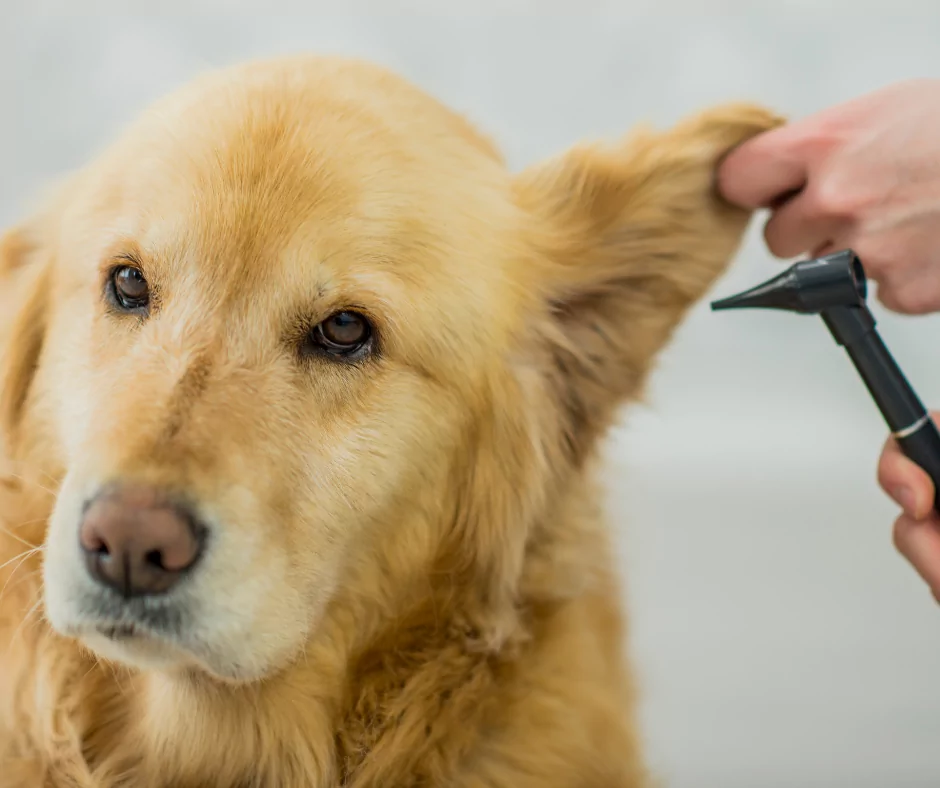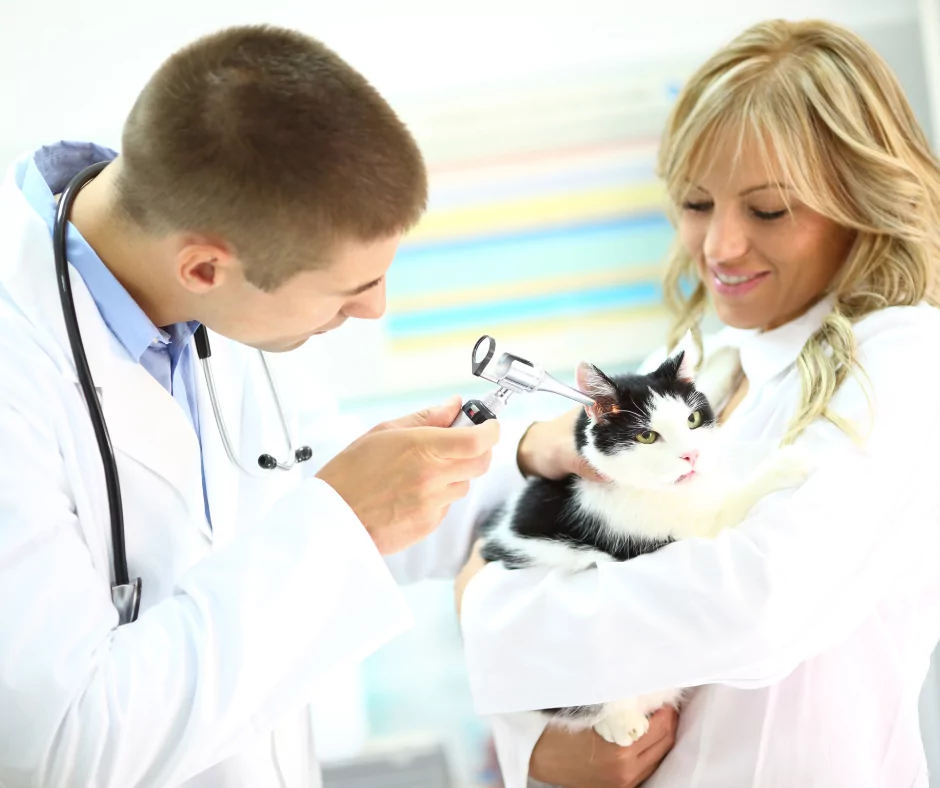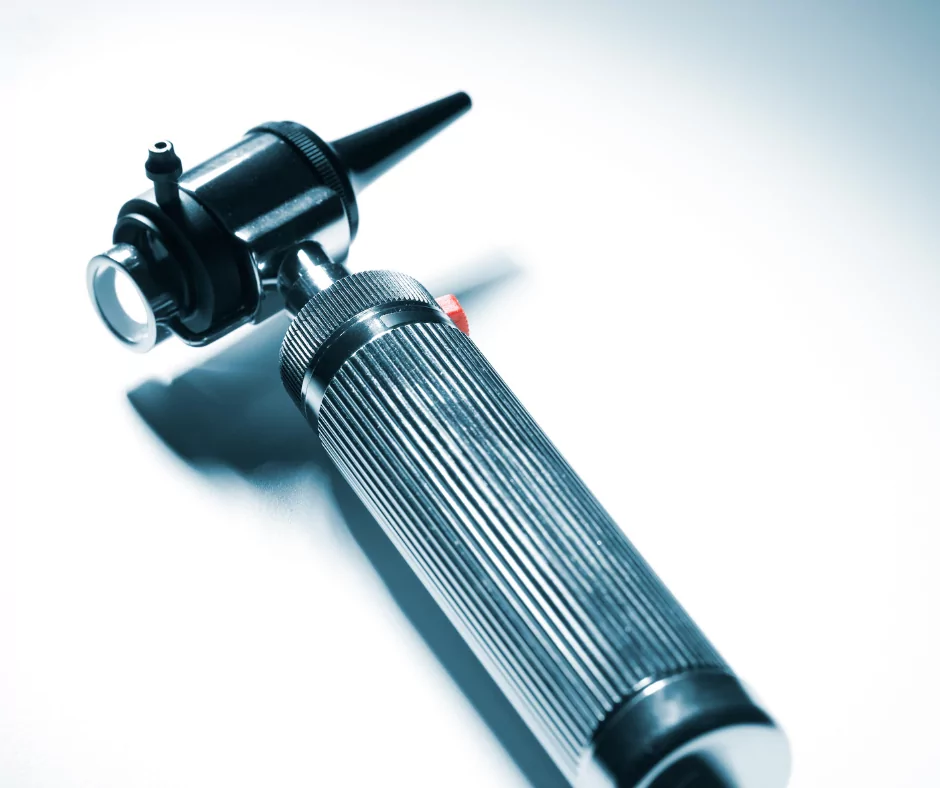
What is an Otoscope?
An otoscope or auriscope is a medical device that is used for ear examination. With an otoscope, you can investigate the ear canal and tympanic membrane or eardrum. Learn more about how to use an otoscope.
The Components of an Otoscope
The regular otoscope has a handle and a head. On the head, there is a low-power magnifying glass and light. The front end of the otoscope has an attachment for a disposable plastic ear specula. This is the end that is inserted in the patient’s ear for examination.
The otoscope should be held carefully against the patient’s ear to prevent unwanted injury. The veterinary professional can look through the lens and see inside the ear. There is a possibility for lens removal so other instruments can be inserted through the otoscope into the ear canal and be used for different purposes, for example removing earwax (cerumen).
This medical device can also be equipped with an insertion point for a bulb that allows pushing air through the speculum and it is called a pneumatic otoscope. With this airflow, the examiner can test the mobility of the tympanic membrane.

What is an Otoscope Used For?
The otoscope is used to diagnose infections of the middle and outer parts of the ear or in medical terms otitis media and otitis externa. This instrument is often used for examining the nose and upper throat of an animal.
The most commonly used otoscope is the monocular otoscope, which gives a two-dimensional view of all ear parts. For determining the depth of the ear a binocular otoscope is used. By using this device, the veterinary professional has both hands free, hence the instrument is fixed on a stand.
We compiled a list of our top picks of 7 Otoscopes for veterinary professionals.
As for humans, otoscopes are also used in veterinary medicine. With this device, a veterinary professional can determine what is the cause of the animal’s ear disease and set a proper diagnosis, so it can be treated on time with the right medical treatment.
The Clinical Significance of the Otoscope

Otoscopes have been used for centuries to examine ears and have been considered a standard tool in the doctor’s office. A modern otoscope includes a condenser system, magnifier, and an illuminator. Modern otoscopes also have a built-in air compressor so that the examiner does not need to worry about the external air pressure. There are many different types of otoscopes. There is some variation in design based on the different manufacturers of the tools, and there are also differences based on how they are used. The type determined by the manufacturer is the most commonly used in medical offices. The designs and use of these tools are described below.
The Different Types of Otoscopes
There are three basic types of otoscopes: indirect, direct, and air conduction transducers.
A cross-sectional otoscope consists of two parts: the tube and a magnifying lens in front of it. The tube is placed in the ear canal, and the lens magnifies the view of what is inside. The tube has a mirror and a light so that internal images appear to be coming from a different angle than they really are. There are two types of cross-sectional otoscopes: those with air pressure and those without. Those without air pressure use direct vision, while those with air pressure are indirect vision devices.
An endoscope is a double-coated optic fiber that is used to look into hard-to-reach places. This is particularly useful in the ear canal as it can provide a view of the eardrum. When an otoscope of this type is used, it is called an endoloop or tympanotome.
Air conduction transducers use sound waves to determine what they hit. This eliminates the need for direct entry into the body and makes them ideal for children, people, or animals who are afraid of having objects inserted into their ears.

